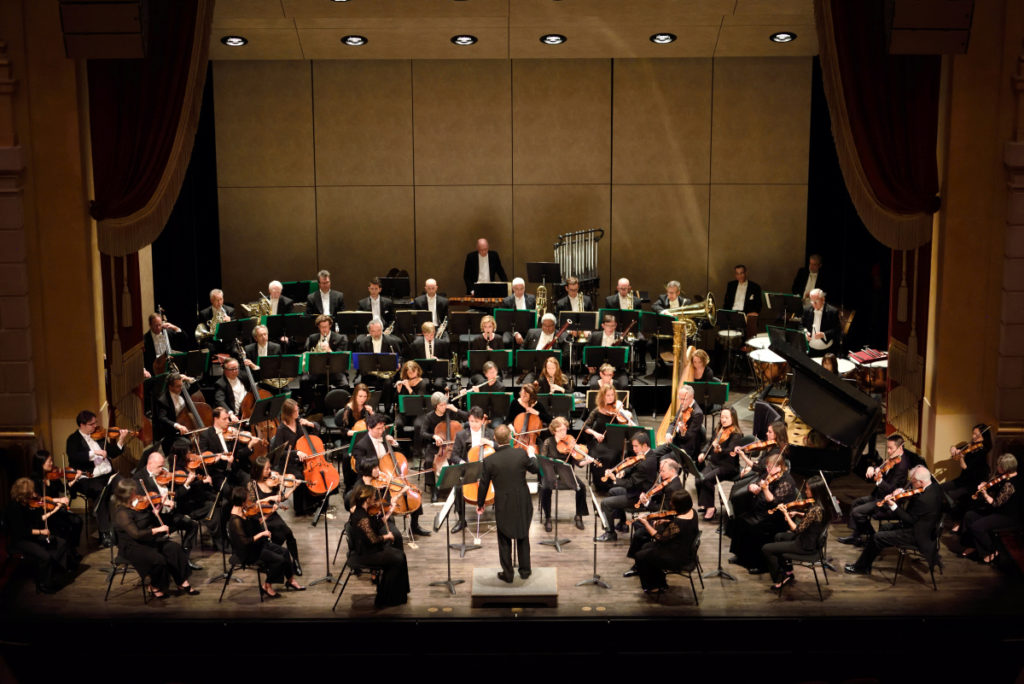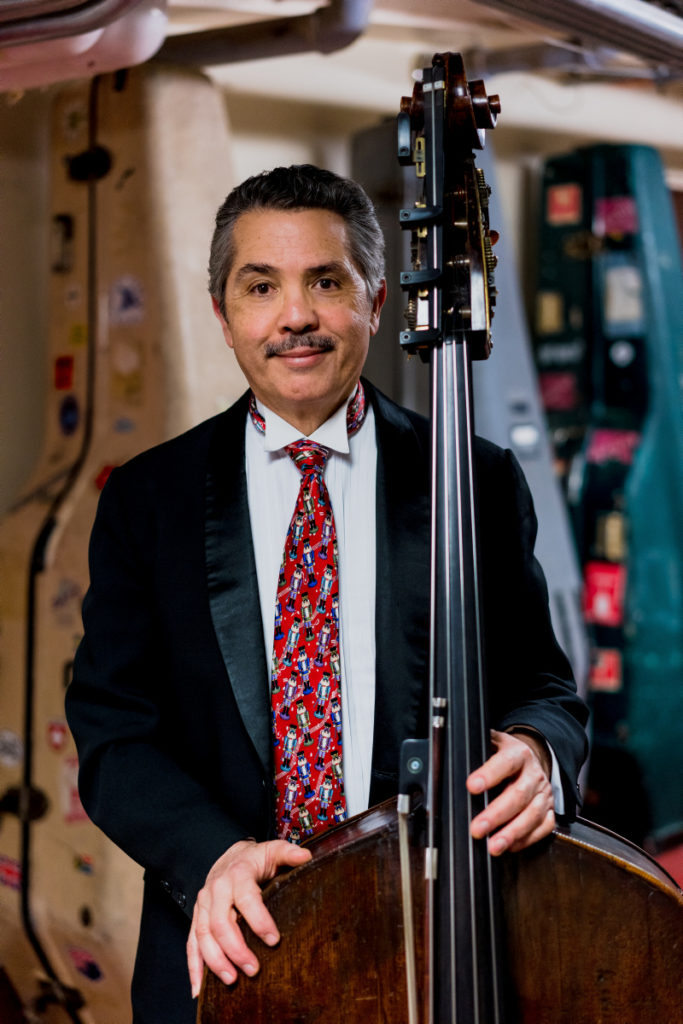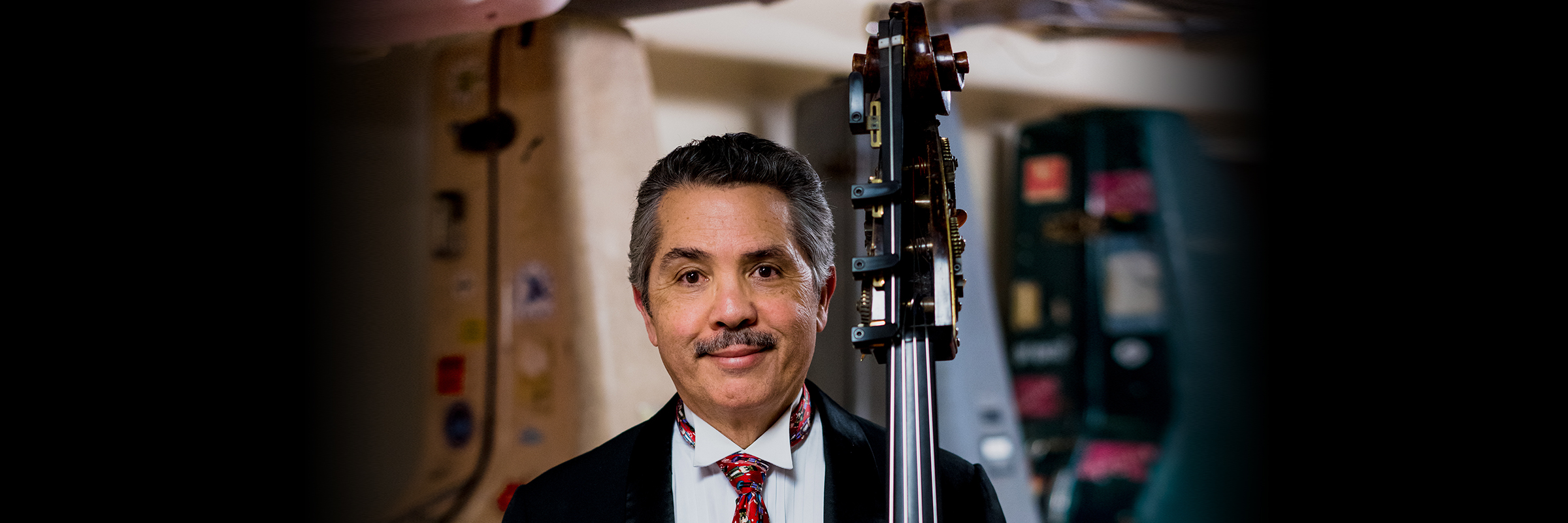Q & A with Principal Bass Player Steve D’Amico
A Founding Member of the SF Ballet Orchestra Bids Farewell
Principal double bassist Steve D’Amico, who retires from the SF Ballet Orchestra in May, is the last remaining founding member of the SF Ballet Orchestra. He joined the Ballet Orchestra in 1975. He has also played with the San Francisco Contemporary Music Players (1979–2004) and has been a member of the San Francisco Opera Orchestra since 1980.
How did you start in music?
I grew up in San Mateo, where my high school [Serra High] had a reputable music department, run by a local musician, John Catalano. Outside of school, John had a dance-style band that played at Bay Area events, and I was the “band boy.” The job required me to set up all the band equipment, the stands, lights, and music. Every once in a while he let me sit in and play a few tunes. It was a good opportunity to learn to play by ear.
What were you playing?
By then, I was playing double bass. I didn’t take classical lessons with a bow until Lynn DeRamus (a local musician now with the Atlanta Opera) came to our school my senior year. After a year of lessons with Lyn, he introduced me to his teacher, SF Symphony double bassist Charles Siani, who became a mentor to me. When Siani started working at San Francisco Conservatory of Music, I received a full scholarship, and was his first student from the Conservatory to graduate in 1976.
When did you start playing in the Ballet Orchestra?
I got into the Ballet Orchestra in 1975, while I was still in school. When Michael Smuin came in with Lew Christensen as co-directors, they decided they needed to form an orchestra. Smuin called Alex Horvath, who was principal violinist at American Ballet Theatre (and later SF Ballet Orchestra Personnel Manager), to get the wheels in motion by recruiting musicians with conductor Denis de Couteau (who became Music Director). We all auditioned together at the Hotel Shaw, and positions were appointed. This was before we had a formal audition procedure.
How have you helped the Orchestra become what it is today?
I have served as Chairman of the Players’ Committee for more than 30 years. Throughout those years, the Player’s Committee has continued to make improvements for the artistic development of the Orchestra.
In the ’90s, Executive Director Arthur Jacobus suggested that we try interest-based bargaining, a negotiation technique created by the Federal Mediation and Conciliation Service. We’ve used this process, facilitated by federal mediators Joel Schaffer and Grey Lim, ever since, and it has helped build trust between orchestra and management.

Has being a part of the Orchestra changed?
It is very different today. Back in the mid-1970s to 1980s, the musicians accompanied the dancers on bus tours up and down California and throughout the Southwest. Today, we do not have the touring opportunities, which also provided a chance to get to know the dancers. Through the years, the dancers come and go while the musicians stay and get older and older.
We started organizing annual Orchestra potlucks between Saturday shows back in the mid ‘90s and we’d invite the dancers. In ’95, one of those dancers, Yolonda Jordan, came by the potluck and we started a conversation. The next week we ran into each other every day and, two years later, we were married. You never know what’s going to happen at a potluck!
Is it still a tight-knit Orchestra?
Many people have told me that this one of the friendliest orchestras they’ve ever performed in. When we’re not playing together, we enjoy celebrating important milestones within the orchestra, which means we get to eat together. We have birthday parties all the time—people like cake. It’s been a really tight family.
In orchestras, there’s a cycle. The young people learn what it’s like to play in the pit from the older musicians. And they see how we treat each other. Even when the original players are gone, the DNA of the orchestra carries on.
Relationships between stand partners is really important. When you’re performing alongside someone night after night, it’s crucial that you work well together. I have been fortunate to have Shinji Eshima as my stand partner since 1982. I have a great bass section and we have all known each other since the 1970s.

Can you talk about recordings?
We’ve made some really excellent recordings over the years. Our first orchestral recording was Paul Chihara’s The Tempest with Jean-Louis Leroux conducting and released as an LP in 1982. Our next project was an independently produced Nutcracker conducted by Denis de Couteau in 1988. At the time, the company was not interested in pursuing recording projects, so the musicians chipped in and we produced it ourselves. We were the first orchestra to record at Lucasfilm’s Skywalker Sound!
Later, we incorporated an electronic media guarantee into our contract, which has helped subsidize numerous other projects. Some of those projects have included 2016 Grammy-winning Ask Your Mama: Twelve Moods for Jazz by Lisa Karpman and 2017 Grammy nominee Conversations With Nijinsky, by Kip Winger. Music Director and Principal Conductor Martin West has been instrumental in developing new recording projects.
Do you have a favorite ballet score?
One remarkable piece that has frequently resurfaced throughout my career is Prokofiev’s Romeo and Juliet. Back when we performed this ballet under Michael Smuin, the music was completely new to me. It was amazing to play this great score, and it was such a tremendous undertaking for the orchestra at that time. Later, Helgi Tomasson did his own version, which has developed over the seasons. This ballet often returns to the repertory [editor’s note: it’s back in 2020!] and it’s always fun and beautiful to perform.
Another memorable ballet for me was Val [Caniparoli]’s Ciao, Marcello in 1997. It was a cool piece set to music by Nino Rota, and inspired by Italian filmmaker Federico Fellini’s Le Dolce Vita. I was playing a jazzy bass part acoustic, while Yolonda performed a snazzy duet.

How many Nutcrackers have you played?
More than 1,300. One piece of advice I give players is to play each performance like it’s your last, because it might be.
What will you miss the most?
The orchestra is a diverse community of musical instruments working together to create a unified sound. And that is a miracle! I can generally only see dancers from the waist up (if at all), so I’m waiting to see what their legs are doing once I retire! However, the emotion I feel with the music is a very unique experience that I won’t have once I leave the pit. That, and my dear colleagues, are what I’ll miss the most. And then there’s the ongoing poker game we’ve had for more than 30 years . . .
What’s next for you?
I’m looking forward to studying music therapy as it is used for patients with Alzheimer’s, dementia, and memory loss. So I’m not going to stop learning. This is just the end of one chapter in preparation for the next one.
Header image: Steve D’Amico // © Brandon Patoc








